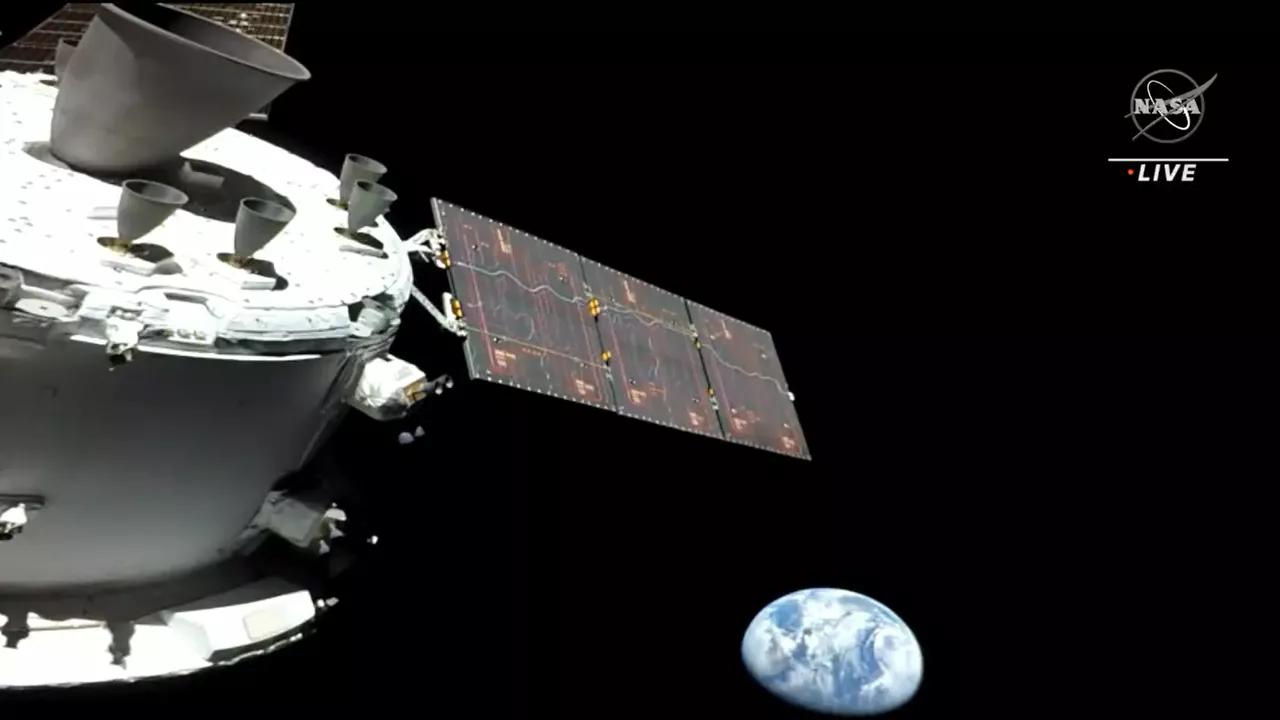Africa-Press – Liberia. The United States’ first Artemis mission by an unmanned Orion spacecraft was delayed for months amid mechanical and weather problems at the Florida launch center. The new program is designed to bring humans back to the moon for the first time in decades, and perhaps beyond.
Hours after blasting off atop the massive Space Launch System (SLS) for the first time on Wednesday morning, the Orion capsule sent back to NASA its first photo – a stunning glimpse of our planet at a distance rarely seen.
According to NASA’s Twitter page for Orion, the photo was taken roughly 58,000 miles above Earth’s surface, or one-fifth the distance to Orion’s ultimate target: the moon. The photo was snapped using a “selfie stick” and partially shows Orion’s hull and solar panels. By comparison, the International Space Station orbits the Earth at just 250 miles up.
“This view of Earth captured from a human-rated spacecraft not seen since 1972 during the final Apollo mission some 50 years ago,” NASA spokesperson Sandra Jones said of the photo during a live broadcast. “The views of our blue marble in the blackness of space now capturing the imagination of a new generation – the Artemis generation.”
A catastrophic failure of the Space Shuttle Columbia’s heat shield during reentry in 2003 killed seven astronauts and helped spell the beginning of the end of the Space Shuttle program.
Following Artemis 1, the Artemis 2 mission is expected to carry a human crew in orbit around the Earth and the moon, but will not land on the moon. Artemis 3 will take two astronauts to the moon and lay the groundwork for a future “gateway” base, which astronauts will be able to use when exploring the lunar surface or preparing for trips into deeper space, such as to Mars.
Other nations have also stepped up their space programs in recent years, including sending unmanned probes to the moon, such as China’s Chang’e missions.
For More News And Analysis About Liberia Follow Africa-Press






